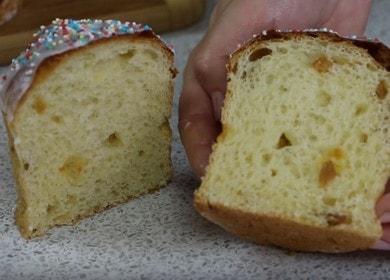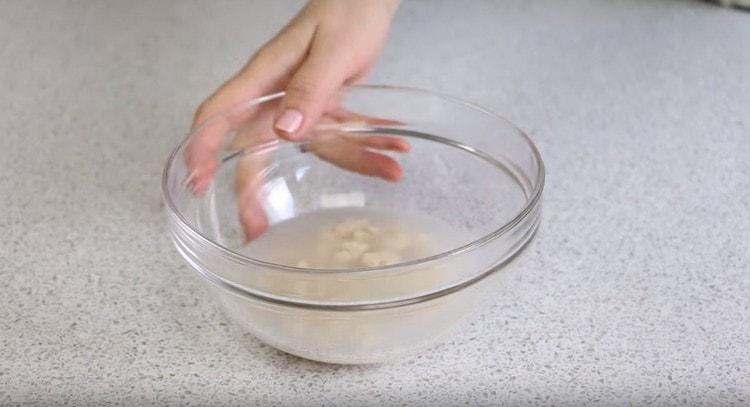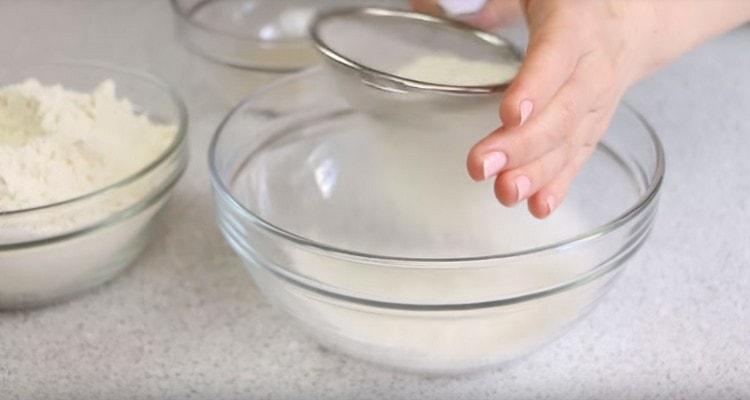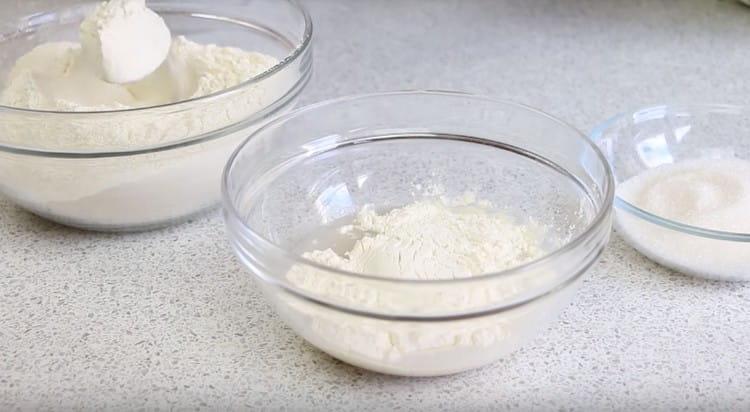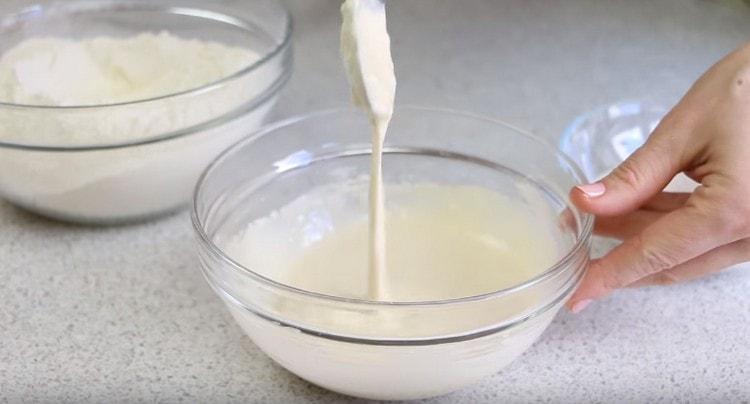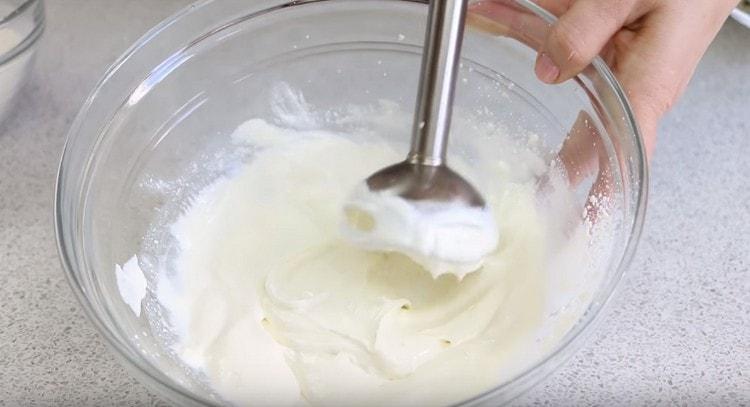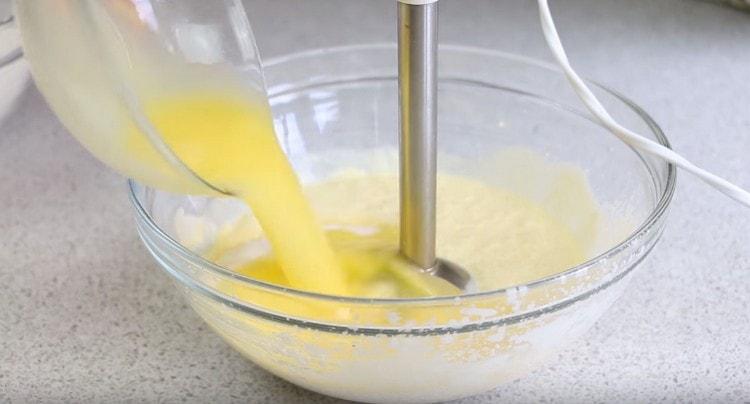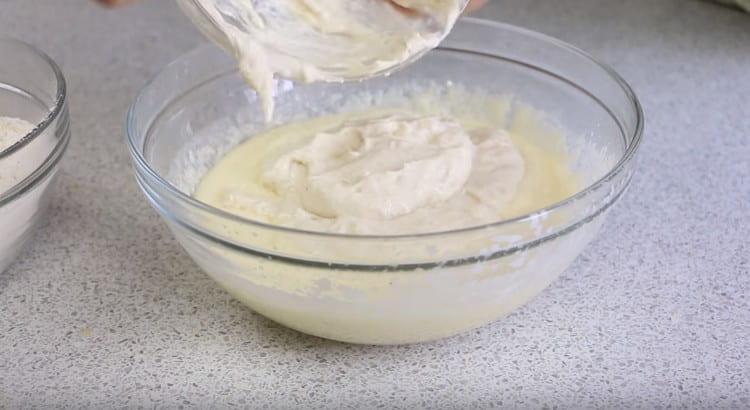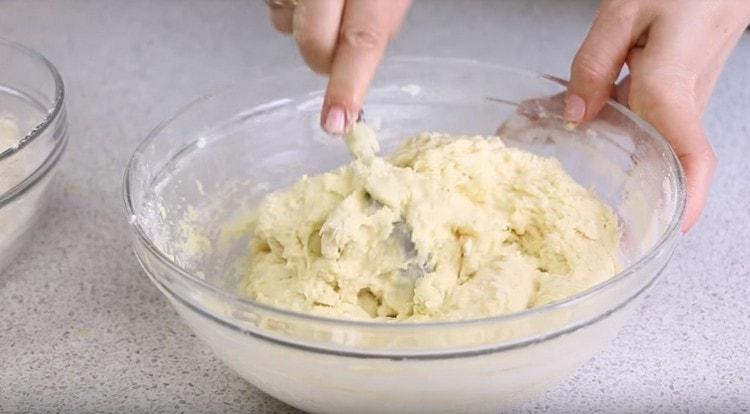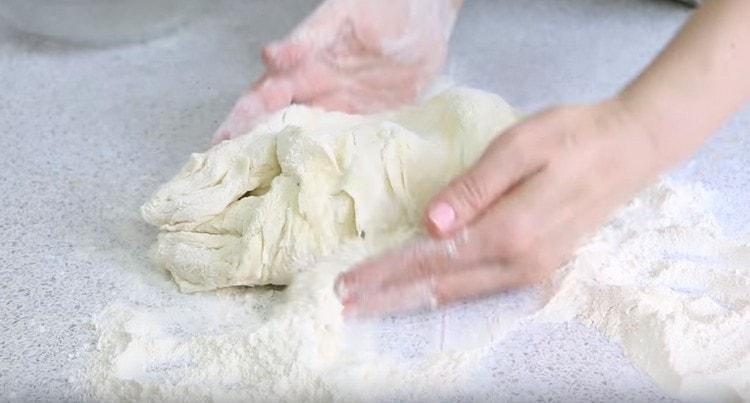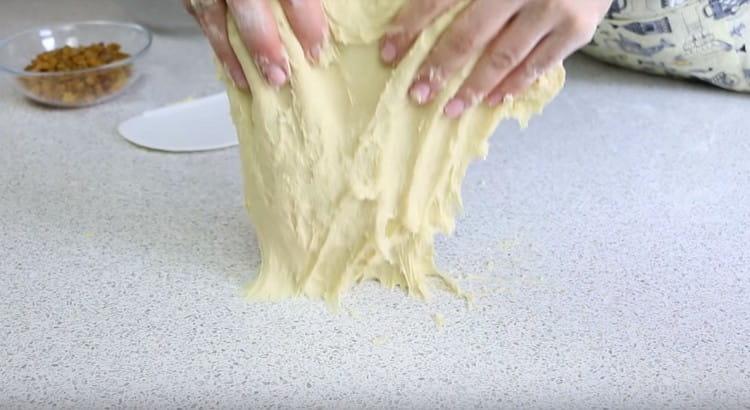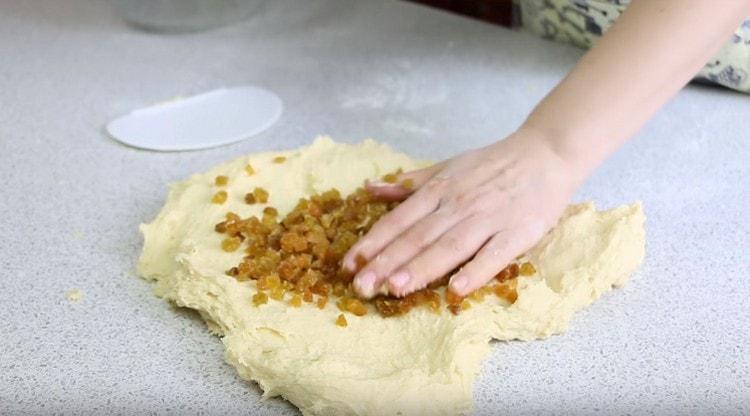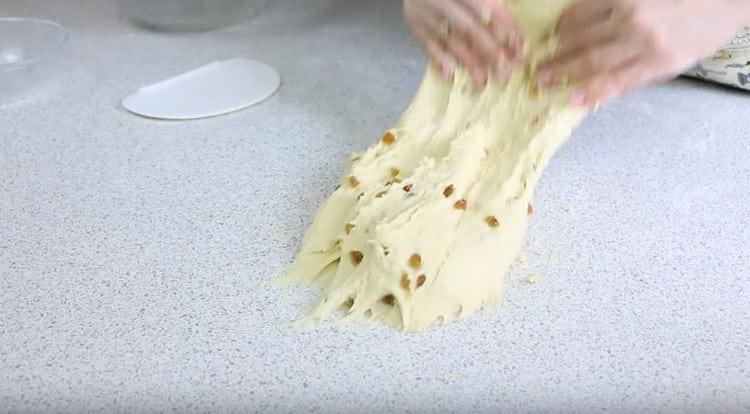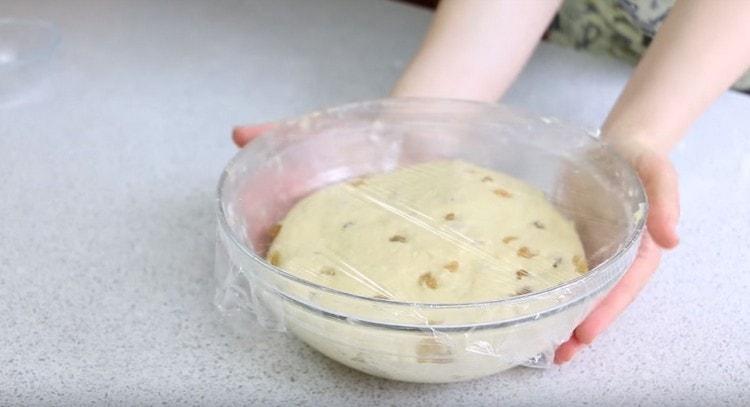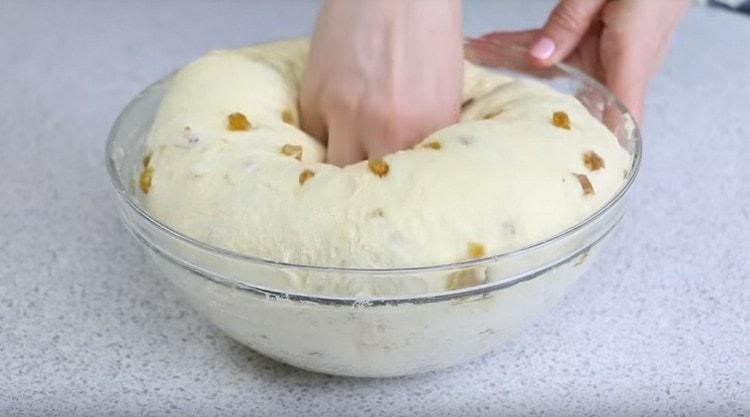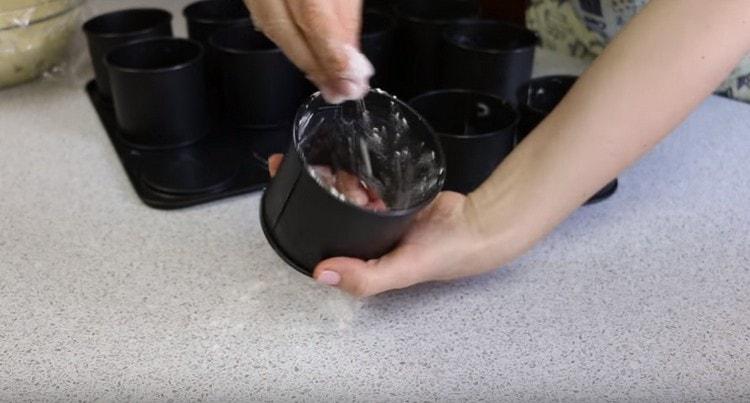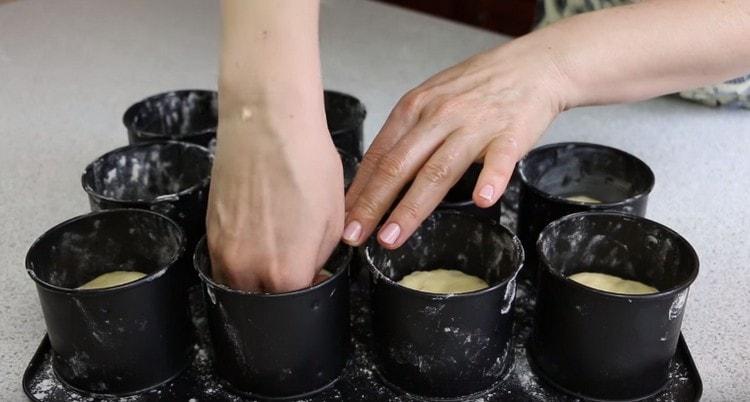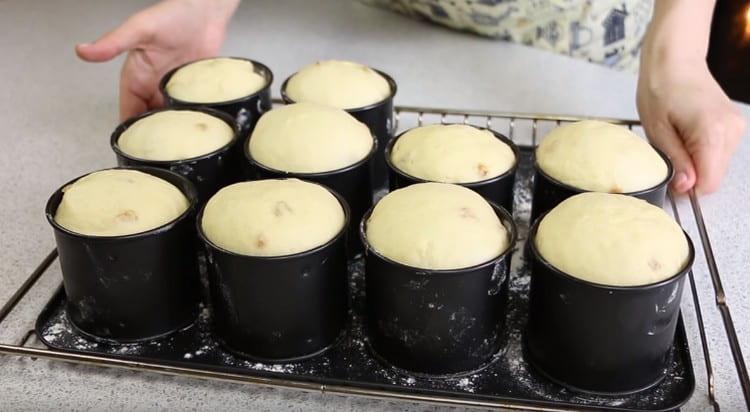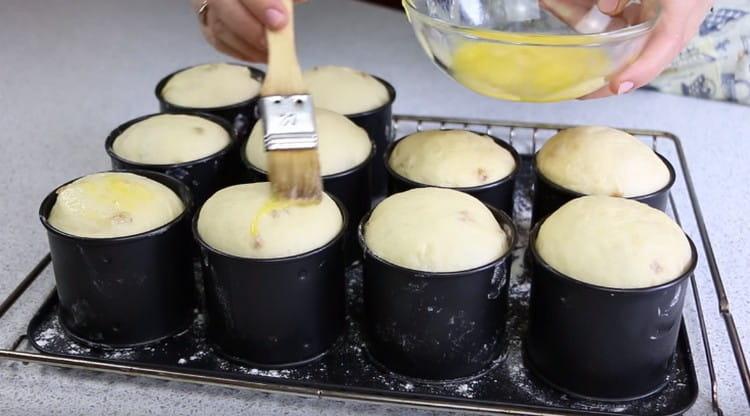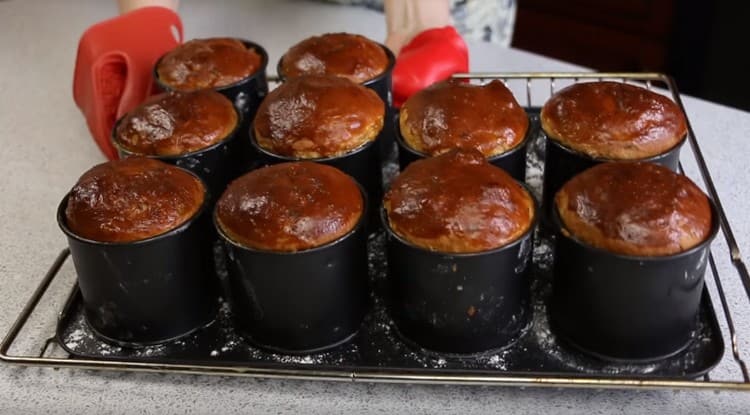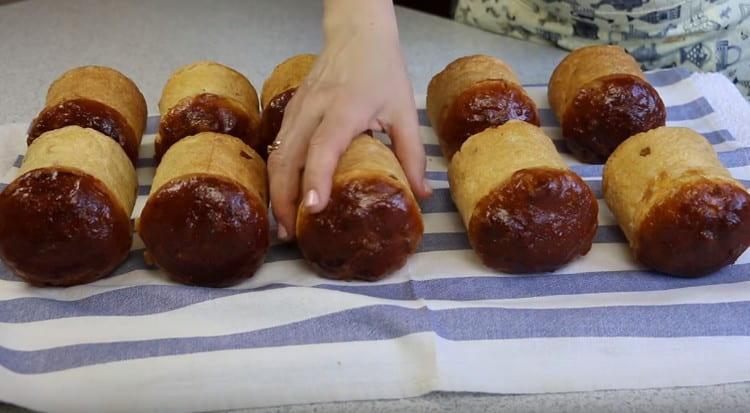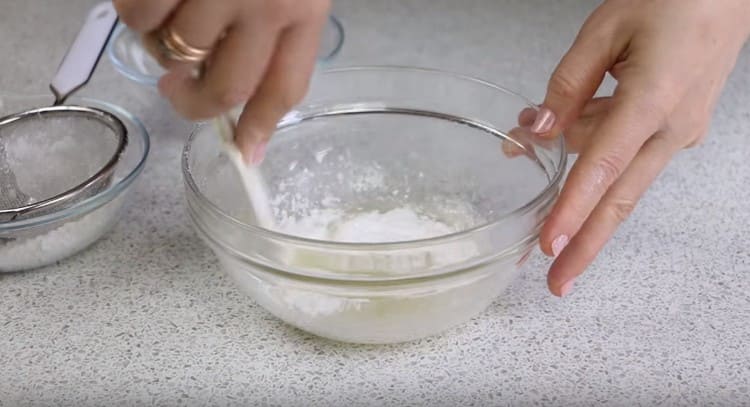Kitchen appliances and utensils:
- deep capacity;
- sieve;
- a bowl;
- submersible blender or fine sieve;
- scapula;
- forms for Easter cakes;
- cling film;
- kitchen scales;
- beaker;
- tea spoon;
- whisk;
- towel;
- oven.
Ingredients
| Product | amount |
| Wheat flour | 500 g |
| Cottage cheese | 150 g |
| Butter | 100 g |
| Sugar | 100 g |
| Water | 100 ml |
| Milk | 100 ml |
| Chicken egg | 2 pcs. |
| Fresh yeast | 25 g |
| Raisins | 100 g |
| Vanilla Extract (optional) | 1 tsp |
| Egg white | 1 PC. |
| Powdered sugar | 150 g |
| Lemon juice | 2-3 drops |
Step cooking
- 25 g of fresh yeast crumbled into a small bowl, pour warm water and leave to stand for several minutes.

- Meanwhile, sift 500 g of wheat flour.

- When the yeast has stood for a while, mix them thoroughly until they are completely dissolved. Then add a few art. l sifted flour and a little sugar from the total.

- Knead the dough, the consistency of a little reminiscent of thin sour cream. If there are small lumps, it's okay, then they will disperse. Leave the dough for 20 minutes so that the yeast is activated and raised with a froth.

- Pour milk into the cottage cheese and beat in a homogeneous curd mass with a submersible blender. This step is extremely undesirable to skip, because if the cottage cheese remains in the form of grains, then in the finished Easter cakes these grains will also be felt. If there is no submersible blender, you can rub the cottage cheese through a fine sieve.

- We beat in the cottage cheese 2 chicken eggs, salt, sugar, melted, but not hot butter and mix everything thoroughly until smooth with a blender or an ordinary spatula.

- Next, add the yeast to the curd. Here, for aroma, you can add 1 tsp. vanilla extract or vanilla sugar.

- Then knead the dough. Gradually pour the sifted flour. When the dough is so thickened that it will be difficult to turn with a spoon, we proceed to the working surface.

- Pour the rest of the flour onto the desktop, level it, spread the dough and then knead very well. First, just roll a very soft dough in flour so that you can work with it, then we put the excess flour aside and mix in the dough in parts as necessary.

- Please note that flour may need a little more or a little less, depending on the amount of gluten in it. The process of kneading the butter dough takes about 10-15 minutes.

- Thoroughly wash 100 g of raisins and dry it, throwing it in a colander or on paper towels. We stretch the dough on the working surface and pour the washed and dried raisins on it.

- We begin to interfere with the raisins in the dough. If the raisins are large, you must first chop it.

- Lubricate the walls of a deep bowl with vegetable oil and put it in a bowl, round off a little, cover with cling film and leave it in a warm place for about 1.5-2 hours.

- We crumble the approached dough, trying to squeeze out of it all the air formed during the lifting process.

- Forms for Easter cakes grease with butter and sprinkle with flour. Shake off excess flour.

- We spread the dough into forms. Each form should be completed by about 1/3, but not higher than half. We pre-crush each piece.It is desirable that the top of the dough is smooth, without sticking raisins, since if there are raisins on the surface, then during the rise the dough may disperse in this place.

- We put the forms with the dough in a warm place for lifting for about 1-1.5 hours.

- After that, grease the dough with a loose egg. Next, put in a cold oven and bake at a temperature of 180 degrees for about 30 minutes. But here you need to consider the size of the cake. If you have a big shape. then such a cake will be baked for about an hour. To prevent the formation of a hard crust on the surface of Easter cakes, a container of water can be placed down the oven.

- We leave freshly baked Easter cakes in the form for 12-20 minutes so that they are slightly cooled.

- Then carefully remove from the mold and lay it out horizontally on a clean towel. Leave to cool completely. We periodically turn over Easter cakes so that they do not deform.

- Usually, cakes on top are smeared with sugar fudge or icing. To do this, grind the egg white with powdered sugar to a homogeneous white mass. Also add a few drops of lemon juice, mix and dip the cakes in the icing.

- We let the excess glaze drain and decorate the Easter cake with a sprinkle. Enjoy your meal.

Video recipe
In this video you will find detailed instructions for making cottage cheese cakes. The author tells in detail what will be needed for this and in what sequence to mix all the ingredients. It also demonstrates how to knead the dough according to the French method.
